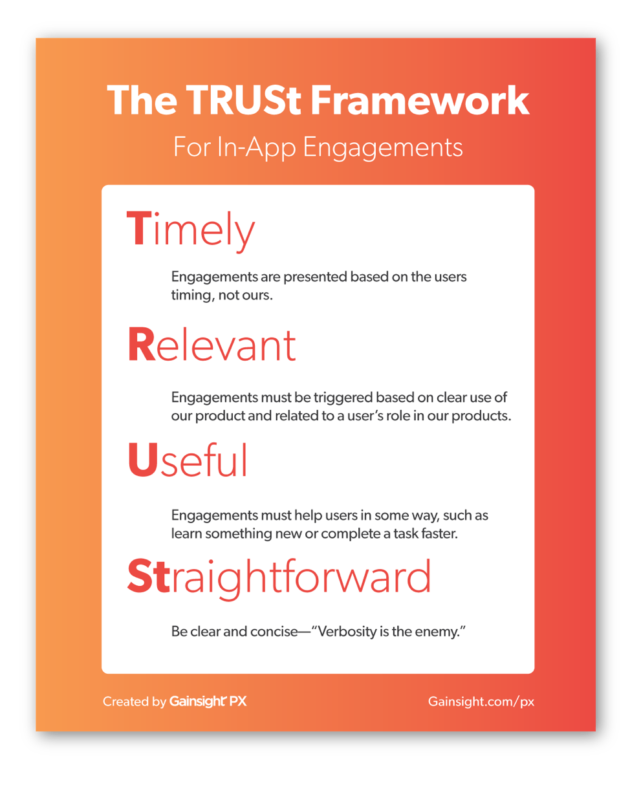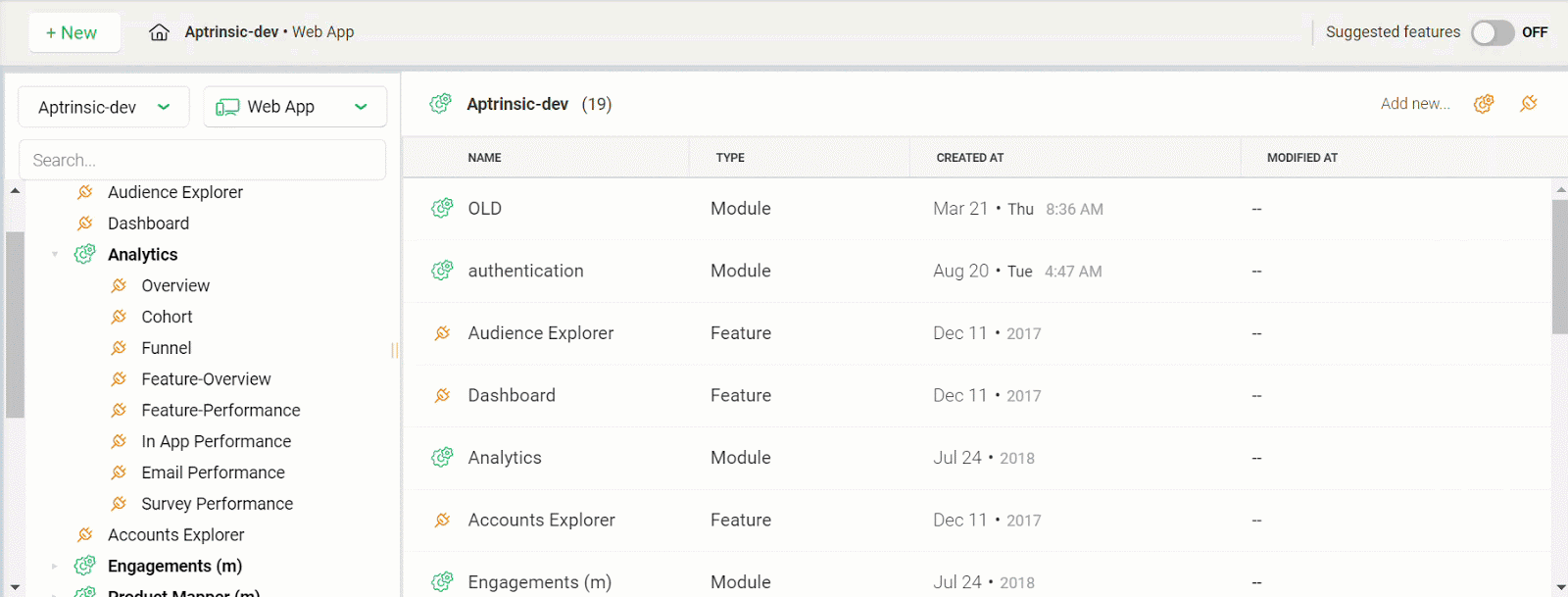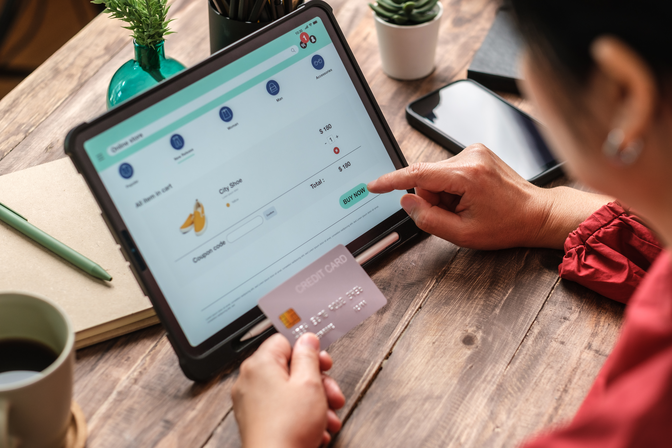
3 unexpected tips for better in-app engagements

Today’s article is a guest post around in-app engagements from Riana Upton, Content Marketing Specialist at Gainsight. Enjoy!
When it comes to in-app engagements there’s a fine line between helpful and annoying. In-app engagements—those outreaches you send to your customer within your application—can drastically impact user retention. But it takes a thorough understanding of your customer and a firm set of rules to ensure that every notification, survey, and guide is adding to the customer experience.
Follow these three golden rules to create engagements that drive true customer value.
Rule #1: create engagements your users can TRUSt
Product, marketing, customer success—these teams all have news and information they need to get across to your users. But what if I told you that not everything you think is important is actually important to your users. Before you deploy that next outreach, make sure you have clearly defined rules of engagement.
We created the TRUSt framework to help with the consistency and prioritization of engagements. It’s important that every team involved in deploying in-app engagements is aligned. This will create a consistent customer experience and mitigate information overload.

Timely
Engagements must be sent out on the user’s timing, not yours. Users visit your product to complete a task so you must make sure that your engagements do not interrupt this. For example, instead of triggering a message when a user arrives at a feature, wait until they’ve completed the workflow and then launch the communication. (Pro-tip: this also can make them more likely to click-through).
Relevant
Engagements should be created with an intended viewer in mind—the more tailored the better. For example, if there are users that only use Feature X, don’t send them notifications about Feature Y or Z.
Useful
Engagements need to be helpful to your users. A useful in-app engagement will add to your user’s confidence as well as notify them of important product information that pertains to their use case.
Straightforward
Engagements should be as unobtrusive to the user experience as possible. Have clear messaging and calls-to-action.
Rule #2: stay organized behind the scenes
A well-organized product map is the secret ingredient for effective in-app engagements. Most analytics and engagement tools will have you create a map of your product so you can better target and track activity. Here’s an example:

Example of a product map from the product experience platform, Gainsight PX. Our automated Instant Mapper helps you create a product map with the click of a button, complete with feature hierarchy to create highly-targeted engagements.
As we emphasized in rule #1, personalization is key. The more detailed and organized your product map is, the more you’re able to slice and dice groups of users to make sure the right information gets to the right people.
For example, if you only use Spotify to listen to podcasts, you won’t care if they just added a new smart music playlist. With a well-organized product map, Spotify can filter out users like you and send notifications to the relevant group of users. The more features and sub-features you map out, the more granular your engagements can be.
The reason why this is so important, yet overlooked, is usually because product maps can be a pain to keep up to date. As your product grows, your product map has to keep up. Automated product mapping methods can add a major efficiency boost so you stay organized as you scale.
Rule #3: don’t let customer feedback disappear into a black hole
In-app surveys can be a great way to get real-time user feedback. Follow the rules above and you’ll unearth some amazing insights. However, the worst thing you can do is let these results fall into the dreaded “feedback black hole.”
If you’re in a group setting and constantly getting ignored, you’ll eventually stop trying to talk at all. This same effect happens to your users if they feel like their feedback falls on deaf ears. You can create really strong relationships with your customers by making sure their voice is being heard. Incorporate their feedback into your product roadmap and bring it to your cross-functional meetings to see how you can work together to bring customer feedback to life.
Go forth and create better engagements
There you have it! Three best practices that will make a huge impact on your in-app engagement strategy. If you’re feeling inspired, put these rules to work in your product right now. Now the next time you say you’re creating a user-centric engagement, you can back it up!





